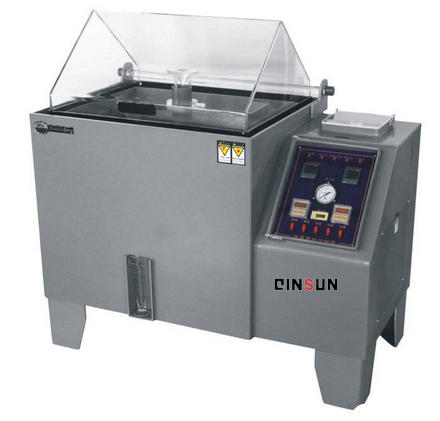- Qinsun Instruments Co., Ltd.
- Tell:+86-21-6780 0179
- Phone:+86-17740808215
- Address:No. 2578 Minhang District Gu Dai Road, Shanghai
- Contact:Mr. Li
- QQ:846490659
What is the 480-hour salt spray test?

The 480-hour salt spray test, also known as the salt fog test or salt mist test, is a corrosion resistance test commonly used in various industries to evaluate the performance of materials, coatings, and surface treatments under aggressive corrosive conditions. It is an accelerated test method that subjects test samples to a highly corrosive salt spray environment for a continuous period of 480 hours. The test aims to simulate the effects of salt-laden air or salt water exposure that materials may encounter in real-world environments like coastal regions or industrial settings.
The 480-hour salt spray test is governed by international standards such as ASTM B117, ISO 9227, and other industry-specific specifications. The test procedure involves the following steps:
1. Sample Preparation: Test specimens, which can be metallic materials, coatings, or treated surfaces, are prepared according to the specified dimensions and configuration. The samples should be thoroughly cleaned and may require additional surface preparation such as sandblasting or coating application.
2. Test Chamber Setup: A salt spray test chamber or cabinet, designed specifically for this test, is used to create and maintain the salt spray environment. The chamber typically consists of a corrosion-resistant cabinet, a salt solution reservoir, an atomizing nozzle system, and a temperature and humidity control mechanism.

3. Salt Solution Preparation: A salt solution is prepared by dissolving pure sodium chloride (NaCl) in distilled water in a defined concentration. The concentration may vary depending on the specific test standard or specification being followed.
4. Test Procedure: The prepared test samples are placed inside the test chamber, ensuring adequate spacing between them to allow for uniform exposure to the salt spray. The atomizing nozzle system sprays the salt solution as a fine mist into the test chamber, creating a corrosive environment. The temperature and humidity conditions in the chamber are set and maintained according to the test requirements.
5. Test Duration: The samples are subjected to continuous exposure to the salt spray for a period of 480 hours. This duration may vary depending on the test standard or intended application.
6. Evaluation of Test Results: After the test duration is completed, the samples are removed from the chamber, cleaned, and evaluated for any signs of corrosion, blistering, rusting, or other surface degradation effects. The evaluation can include visual inspection, measurement of corrosion products, and other quantitative or qualitative assessments.
The results of the 480-hour salt spray test provide valuable information about the corrosion resistance and durability of materials, coatings, or surface treatments. It helps assess the suitability of materials for specific applications, determine the effectiveness of protective coatings or treatments, and guide the selection of appropriate corrosion mitigation strategies. It is worth noting that while the test provides accelerated corrosion exposure, it may not precisely replicate the actual corrosive conditions encountered in real-world environments. Therefore, test results should be interpreted with caution and validated with long-term exposure or field testing when necessary.





